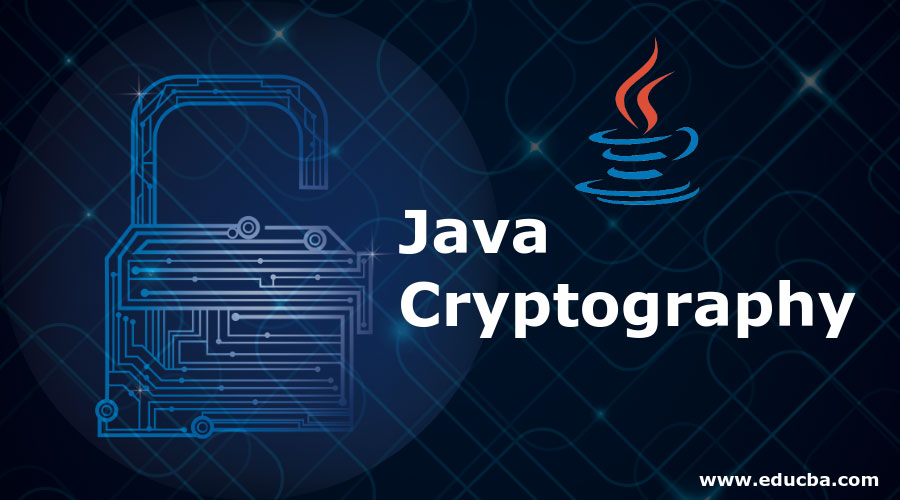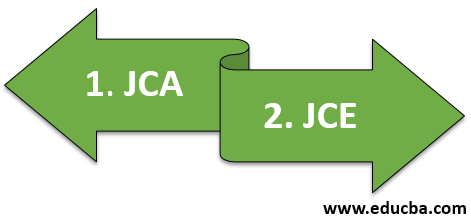Introduction to Java Cryptography
Java has become more popular, and people use it everywhere to protect Java. Several mechanisms are used to ensure that Java is a safe language to use, which is called Java Cryptography. This consists of two main things JCA (Java Cryptography Architecture) and JCE (Java Cryptography Extension). JCA is a set of classes that provide cryptographic capabilities to Java programs and is a default in the Java application development environment. JCE is an additional piece of software that requires special licensing.
Services of Java Cryptography
Below are the two cryptography services provided:
- JCA
- JCE
1. JCA
- JCA stands for Java Cryptography Architecture. It is a set of classes that provides Cryptography capabilities for Java programs. It is a default part of the Java application development environment, i.e., JDK ( Java Development Kit). JCA was introduced in JDK (Java Development Kit) version 1.1. It offers fundamental cryptographic functionality for Java programmers. The cryptographic functionalities involve access control, message digest, key pair, permissions, and digital certificates. JCA provides a set of abstract classes in a Java package called security.
- This Architecture is also known as the provider architecture because it provides security. The main goal behind designing this architecture is to separate the cryptography concepts from their actual implementation. To achieve this programming language independence, it uses the interface concept. An interface is a set of functions that specifies the behavior of the interface, i.e., what the interface can do. It does not show the actual implementation of the interface. Let’s see an example to understand this concept better.
- When we buy a new computer, we do not worry about the mobile or PC’s internal details like the electronic components used, chip, current or voltage, etc. We use a phone or computer without knowing how it works inside. This set of internal operations is called implementation. We only know about the RAM, memory, battery, etc. Not the internal working. In the same way, the interface works in JCA.
- The main purpose of this is JCA, which provides pluggable architecture. That means it allows the user to change the internal details without knowing the router interface. JCA provides conceptual cryptographic functionalities and will enable them to implement in various ways. This allows the different vendors to provide their implementation of cryptographic tools.
- To achieve this, Architecture consists of several classes called engine classes. Engine class is a logical implementation of cryptographic functionalities. There is only a single Java security signature class in this Architecture which represents all the possible variations of the digital signature algorithm class. Another class called provider does the actual implementation of this algorithm.
Key Management:
Java version 2 provides a key tool that separately stores public and private keys. The key tool protects both keys using passwords. Key tools use a database to store the keys, called a Keystore.
Below is the list of services provided by the key tool:
- Export certificates.
- Import other people’s certificates for signature verification.
- Create key pairs.
- Creates self-signed certificates.
- The process involves generating a CSR (Certificate Signing Request) that needs to be sent to a Certificate Authority (CA) to request a certificate.
2. JCE
JCE stands for Java Cryptography Extension. The cryptographic functionalities of data encryption fall in the category of JCE. The architecture of JCE follows the same pattern as that of JCA. It is also based on the concept of Provider classes and engine classes, as we have discussed in the JCA. The implementation is the default that Sun Microsystems provide. Since the architecture is similar to Java Cryptography Architecture, we will not discuss the same thing again.
Conclusion
Both Java Cryptography Architecture and Java Cryptography Extension are strong Cryptography Architectures. Careful planning and design have been implemented to facilitate future vendor-independent expansion. The biggest problem is using this cryptography, where we must face licensing issues. Because of its export laws, Java Cryptography Extension does not come as a part of the core Java Development Kit. The restrictions have been lifted; application developers can use the Java Cryptography Extension freely.
Recommended Articles
This is a guide to Java Cryptography. Here we discuss the introduction to Java cryptography and the services and implementing provider for cryptography. You can also go through our related articles to learn more –




